Why are my cannabis leaves pointing up?
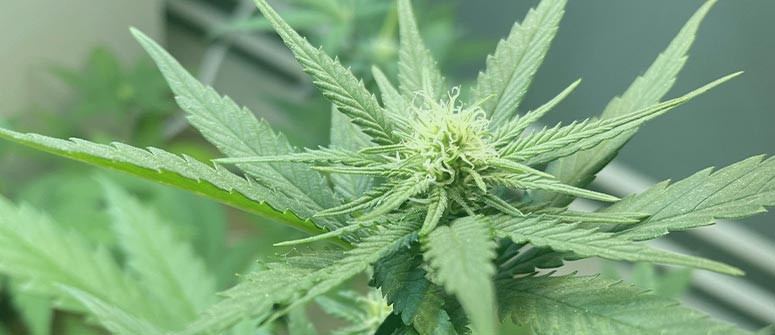
Last updated Published
"Praying" or upward-pointing cannabis leaves are fairly common. In this article, we'll teach you what this common symptom means, and when it's cause for concern. Then, we'll show you how to fix the issue and prevent it from occurring in the future.
Contents:
Are the leaves of your cannabis plants pointing upward toward your grow light? This fairly common symptom can be concerning for cannabis growers, especially rookies witnessing it for the first time. But upward-pointing (or "praying") cannabis leaves aren't always cause for concern. Find out when to worry about praying leaves on cannabis plants, and what to do about it.
Why do cannabis leaves point upward?
There are a few common causes of upward-pointing cannabis leaves. These are:
- High light intensity
- Light burn
- Heat stress or high humidity
- Overfeeding
In what follows, we'll explore the main culprit of upward-pointing cannabis leaves—namely, light burn—in more detail. Check out our articles on the other causes mentioned above for more info if you don't believe your plants are suffering from light burn.
What is light burn in cannabis?
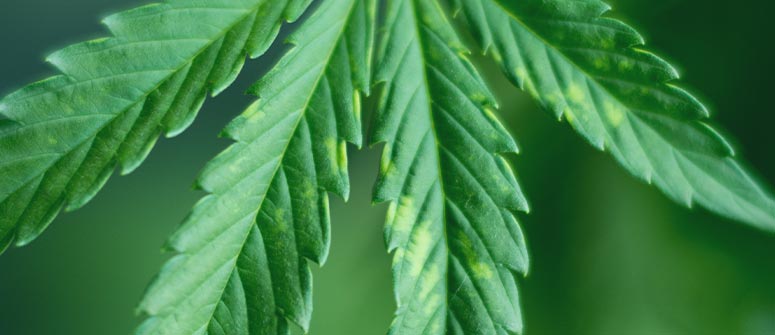
Light burn is the cannabis plant's natural response to receiving too much light—i.e. light stress. Most cases of light burn happen indoors, where growers give their plants as much light as possible in order to maximise growth, yields, and THC production. However, not even the most sophisticated cannabis grow light can replicate the light quality emitted by the sun, and where you position your grow light, and for how many hours you leave it running, can greatly affect the growth of your plants.
Most indoor growers like to give their vegetative marijuana plants between 16–18 hours of daily undisturbed light. When done properly, this can produce great results. However, using the wrong kind of light or keeping your lights too close to your canopy can actually do your plant more harm than good.
If your plants' leaves are pointing upward slightly (particularly new, young leaves near the top of the plants) but they look otherwise healthy (i.e. they have a healthy green colour and are showing good signs of growth), you may have found that "sweet spot" that most indoor growers look for, wherein you maximise light hours without causing your plants undue stress.
If, however, your plants have developed upward-curling leaves and signs of unhealthy growth (see below), you'll want to address the lighting in your room or tent.
What does light burn look like?
Light burn causes some telltale symtpoms, including:
- Upward-curling (or "praying") leaves
- Bleached leaf tips/edges (not to be confused with a nutrient deficiency)
- Bleached buds
- Stunted growth
Keep reading for a more detailed description of these symptoms and what causes them.
Leaves pointing up
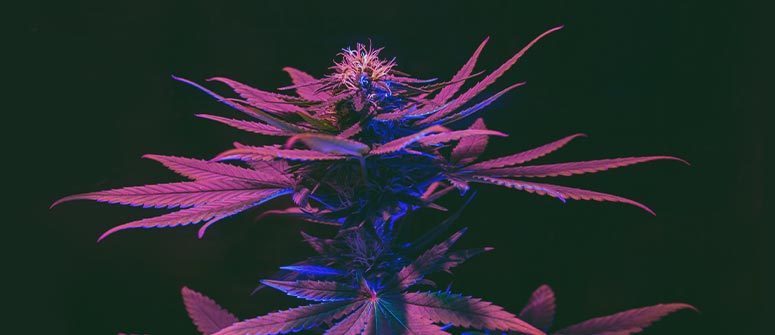
Cannabis leaves (particularly the plant's large fan leaves) are the powerhouses that drive photosynthesis. When cannabis suffers light burn, its fan leaves will point upward toward the light. More specifically, the individual "fingers" of the leaves may curl upward, almost like they're closing in on themselves. This is the plant's physical response to excess light—an attempt to minimise its leaf surface area in order to minimise exposure to light rays.
Burnt or brown leaf edges/tips
Burnt leaf tips and edges are a classic sign of light burn, though it can easily be confused for a symptom of a nutrient deficiency. Note that, unlike nutrient deficiencies, which typically cause discoloration of entire leaves, light burn is notorious for causing burnt leaf tips or edges. If it goes unaddressed, light burn may eventually cause larger parts of leaves to turn yellow and dry out, but it typically affects the tips and edges first.
Bleached buds/leaves
Another classic sign of light stress and subsequent burn is "bleaching"; in response to excess light exposure, cannabis plants may stop producing chlorophyll in the most affected areas of the plant in order to slow photosynthesis. As a result, you may see your plants develop pale white/yellow spots.
Yellow leaves with green veins
If left unaddressed, light burn can cause entire leaves to yellow, dry out, and die. As mentioned earlier, light burn typically causes yellowing leaf tips and edges first, but over time the damage from overexposure to light can extend and affect entire leaves, especially those toward the top of a plant's canopy. Note that as the leaves yellow, the veins tend to stay green (unlike in a nutrient deficiency, which typically affects the entire leaf).
Damaged top growth
As we’ve alluded to, symptoms of light burn tend to manifest on the tops of plants, including young, new foliage. That's because these are the areas that naturally receive more light exposure (unless you happen to use side lighting in your tent or room).
Light burn vs nutrient burn
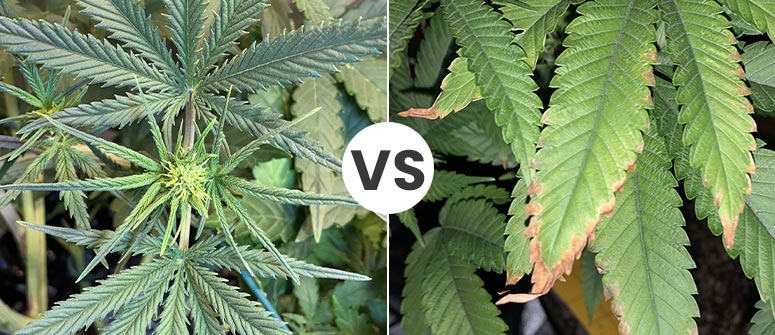
Rookie cannabis growers often struggle to properly diagnose plant health issues, and with good reason; many plant problems produce the same or very similar-looking symptoms. Light burn, in particular, can easily be confused with nutrient burn, which can also cause yellow or discoloured leaves and, in some cases, upward-pointing leaves.
The two biggest differences between light burn and nutrient burn are:
- Light burn causes yellow leaf edges and tips, and only affects entire leaves after a prolonged period. Nutrient burn, on the other hand, causes entire leaves to turn yellow or become otherwise discoloured in a much shorter time frame.
- Light burn typically affects leaves and buds toward the tops of plants (i.e. the areas most exposed to light in a grow room/tent). Nutrient burn can affect leaves all over the plant, depending on whether the lacking nutrient is mobile or not. Nitrogen, for example, is a mobile plant nutrient, so nitrogen deficiency typically first affects old leaves toward the bottom of a plant. Calcium, on the other hand, is an immobile nutrient, so calcium deficiencies typically affect young foliage first.
If you suspect that your plants are suffering from nutrient burn rather than light burn, make sure to learn how to properly diagnose and treat different cannabis nutrient deficiencies.
How to fix and avoid light burn on weed plants
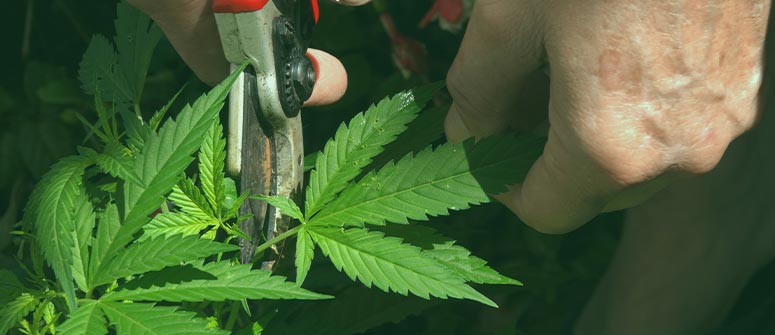
Fixing and preventing light burn in cannabis chiefly involves adjusting the position (and sometimes running time) of your grow lights. How you go about this will vary depending on the size of your grow space, the traits of the strain(s) you're growing, and the type of grow light you have installed.
If you do notice symptoms of light burn, the first thing you'll want to do is stay calm. While it's never ideal to see your plants developing any issues, the damage caused by light burn is fairly minimal and easy to address, especially when compared to the stress caused by pests or nutrient deficiencies.
From there, you can move forward and correct light burn by doing the following.
Move your grow lights further away from the plant canopy
Most growers opt to keep their lights anywhere from 35–90cm from the top of the canopy, depending on the type of light being used. Metal halide or high-pressure sodium lights give off a lot of heat, so growers like to keep them further from their plants than LED or fluorescent lamps. You can use a lux meter to measure the light intensity in your grow room. Remember that the ideal lux range for cannabis is about 60–70,000 (depending on the phase of growth).
Train or prune your plants
If moving your grow lights isn't an option, you may need to employ training techniques to teach your plants to grow outward rather than upward. Alternatively, if training isn't an option, you may need to prune your plants back to reduce their proximity to your grow light.
Reduce the power of your grow light
Some LED and HID lamps have adjustable power settings or dimmers. If your light has neither, you can try dimming it by installing a fine shade cloth between the light and your plants.
Keep your growing conditions optimal
The best way to promote healthy growth of your cannabis plants is through a holistic approach that takes into consideration all aspects of growing, including the temperature, humidity, and airflow in your grow room/tent, as well as the quality of your growing medium and the quality of your nutrients and water. Any shortcomings in these areas will affect the health of your plants and leave them more susceptible to other problems, including light burn.
Choose the appropriate strain for your grow room
A great way to prevent light burn in your future grows is to pick the right strain to suit your grow space. If you're growing in a small space, for example, choose a strain that stays nice and compact, rather than one that tends to stretch. Similarly, if you know that you have a high-intensity grow light, consider looking for light-resistant strains for your future grows, such as those listed below!
3 best light-stress-resistant strains
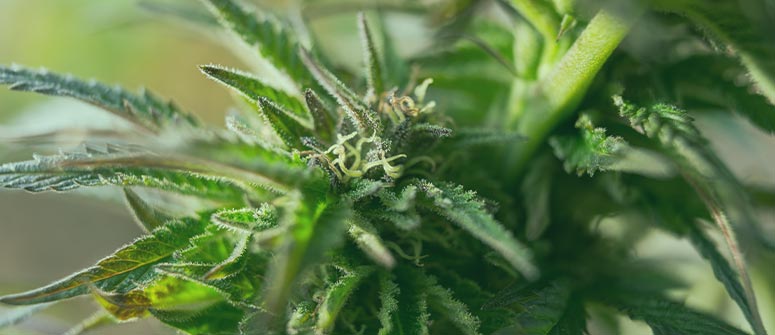
Some cannabis strains are simply more resistant to specific types of stress than others. You can use the CannaConnection strain database to explore hundreds of cannabis strains and learn more about not only their aromas, flavours, and effects, but also their grow traits (such as their resilience to different types of stress).
Below are three strains that are particularly resilient to high light intensity and light burn.
1. Sour Diesel
Sour Diesel is renowned among cannabis growers and smokers all over the globe. And it's no wonder why; besides its unique aroma and uplifting cerebral effect, Sour Diesel is extremely resilient. Whether you grow her indoors or out, Sour Diesel will love soaking up the rays from the sun or your grow light to fuel the development of her dense, frosty flowers.
2. Sour Diesel Autoflowering
Sour Diesel Autoflowering packs the aroma and potency of the original Sour D, but in a fast, compact auto version. Like the original, Sour Diesel Autoflowering is resilient to a wide variety of stressors, including light stress, and her compact stature means she won't grow too tall, so you shouldn’t have issues with her growing too close to your grow light.
3. Aurora Indica
Bred from Afghan and Northern Lights, Aurora Indica is a delicious modern hybrid with old-world charm. These plants grow nice and compact, are ideal for indoor spaces, and love plenty of light to fuel their vigorous vegetative growth and intense bloom phase. Grow Aurora Indica under strong lights and she'll reward you with dense, rock-solid buds covered in sticky trichomes.
Cannabis leaves with pointed tips: Not always a huge concern
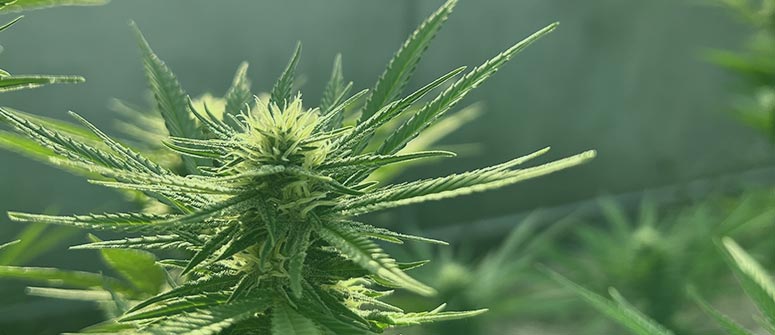
Upward-pointing cannabis leaves can be alarming, especially if you've never seen them before. But as we've seen in this article, even if the result of light burn, praying leaves aren't too serious. Simply follow the above tips to get your grow back on track!
.jpg)
.jpg)

.jpg)